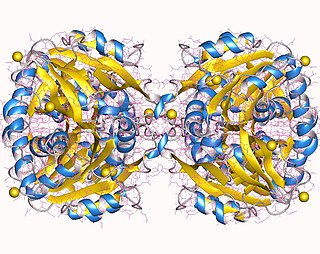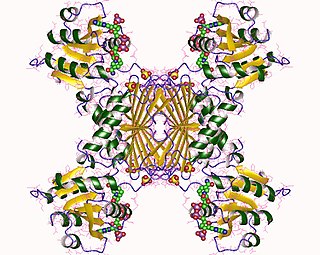| nitroquinoline-N-oxide reductase | |||||||||
|---|---|---|---|---|---|---|---|---|---|
| Identifiers | |||||||||
| EC no. | 1.7.1.9 | ||||||||
| CAS no. | 37256-35-2 | ||||||||
| Databases | |||||||||
| IntEnz | IntEnz view | ||||||||
| BRENDA | BRENDA entry | ||||||||
| ExPASy | NiceZyme view | ||||||||
| KEGG | KEGG entry | ||||||||
| MetaCyc | metabolic pathway | ||||||||
| PRIAM | profile | ||||||||
| PDB structures | RCSB PDB PDBe PDBsum | ||||||||
| Gene Ontology | AmiGO / QuickGO | ||||||||
| |||||||||
In enzymology, a nitroquinoline-N-oxide reductase (EC 1.7.1.9) is an enzyme that catalyzes the chemical reaction
- 4-(hydroxyamino)quinoline N-oxide + 2 NAD(P)+ + H2O 4-nitroquinoline N-oxide + 2 NAD(P)H + 2 H+
The 4 substrates of this enzyme are 4-hydroxyaminoquinoline N-oxide, NAD+, NADP+, and H2O, whereas its 4 products are 4-nitroquinoline N-oxide, NADH, NADPH, and H+.
This enzyme belongs to the family of oxidoreductases, specifically those acting on other nitrogenous compounds as donors with NAD+ or NADP+ as acceptor. The systematic name of this enzyme class is 4-(hydroxyamino)quinoline N-oxide:NADP+ oxidoreductase. Other names in common use include 4-nitroquinoline 1-oxide reductase, 4NQO reductase, and NAD(P)H2:4-nitroquinoline-N-oxide oxidoreductase.






